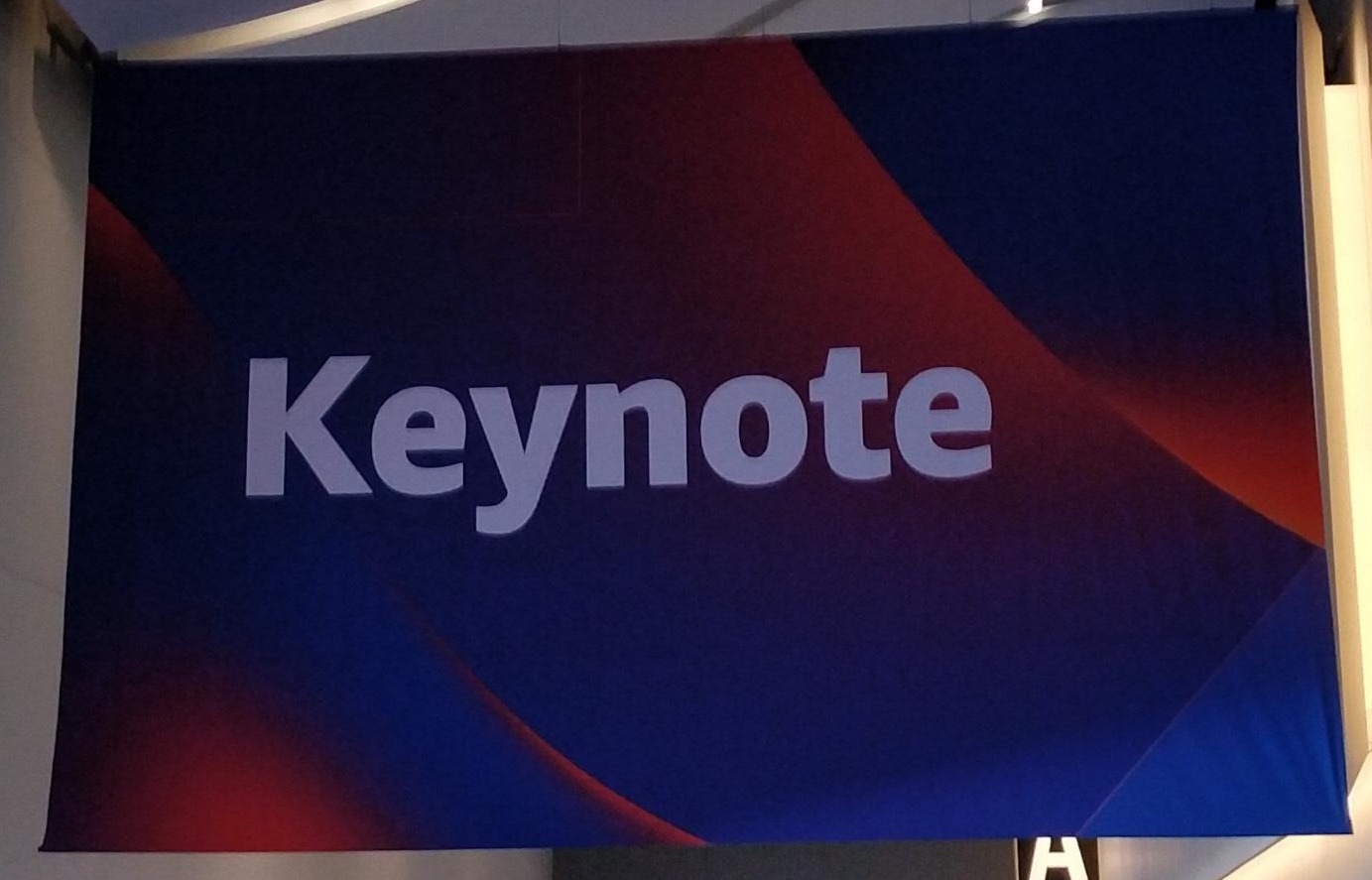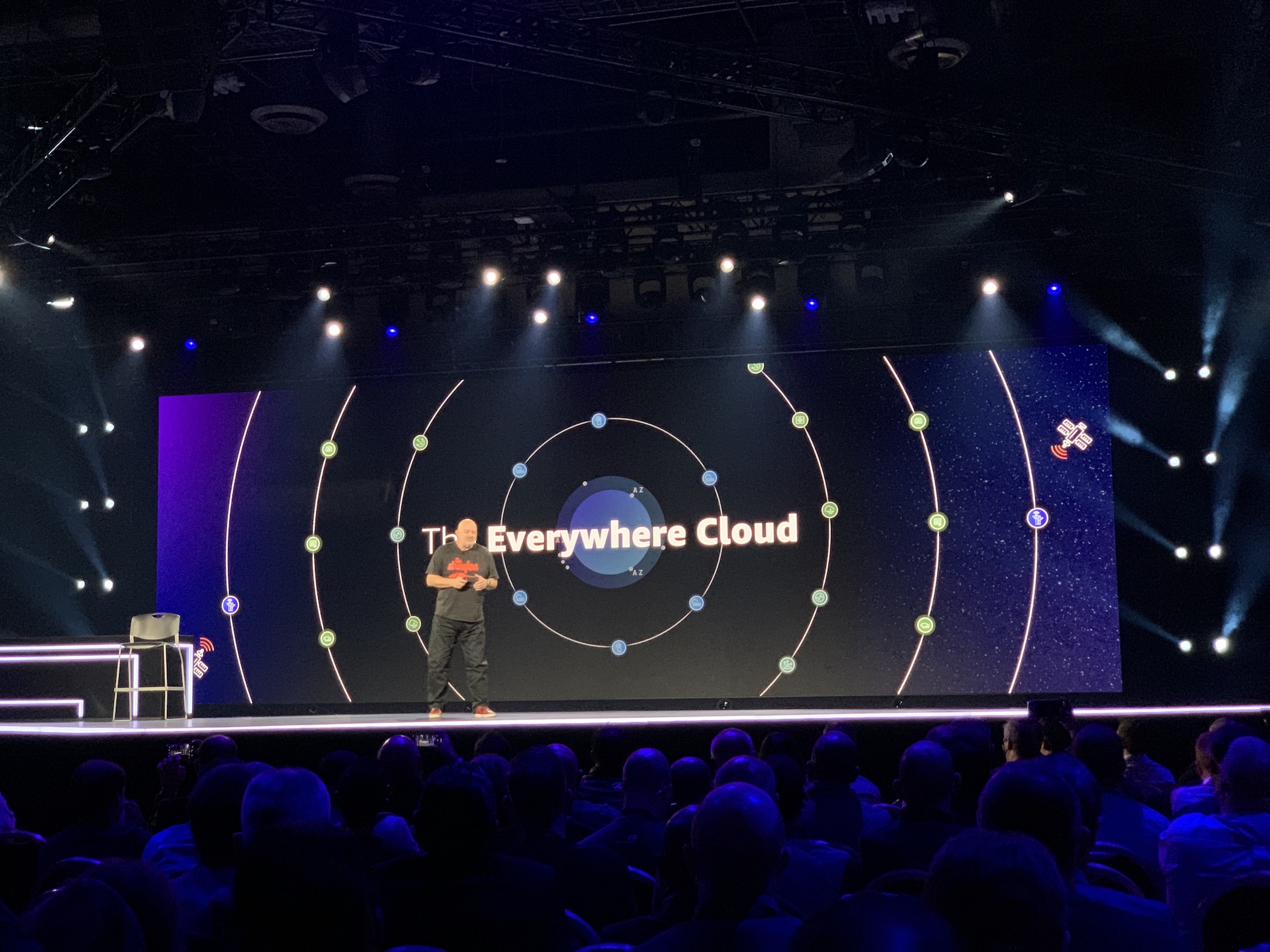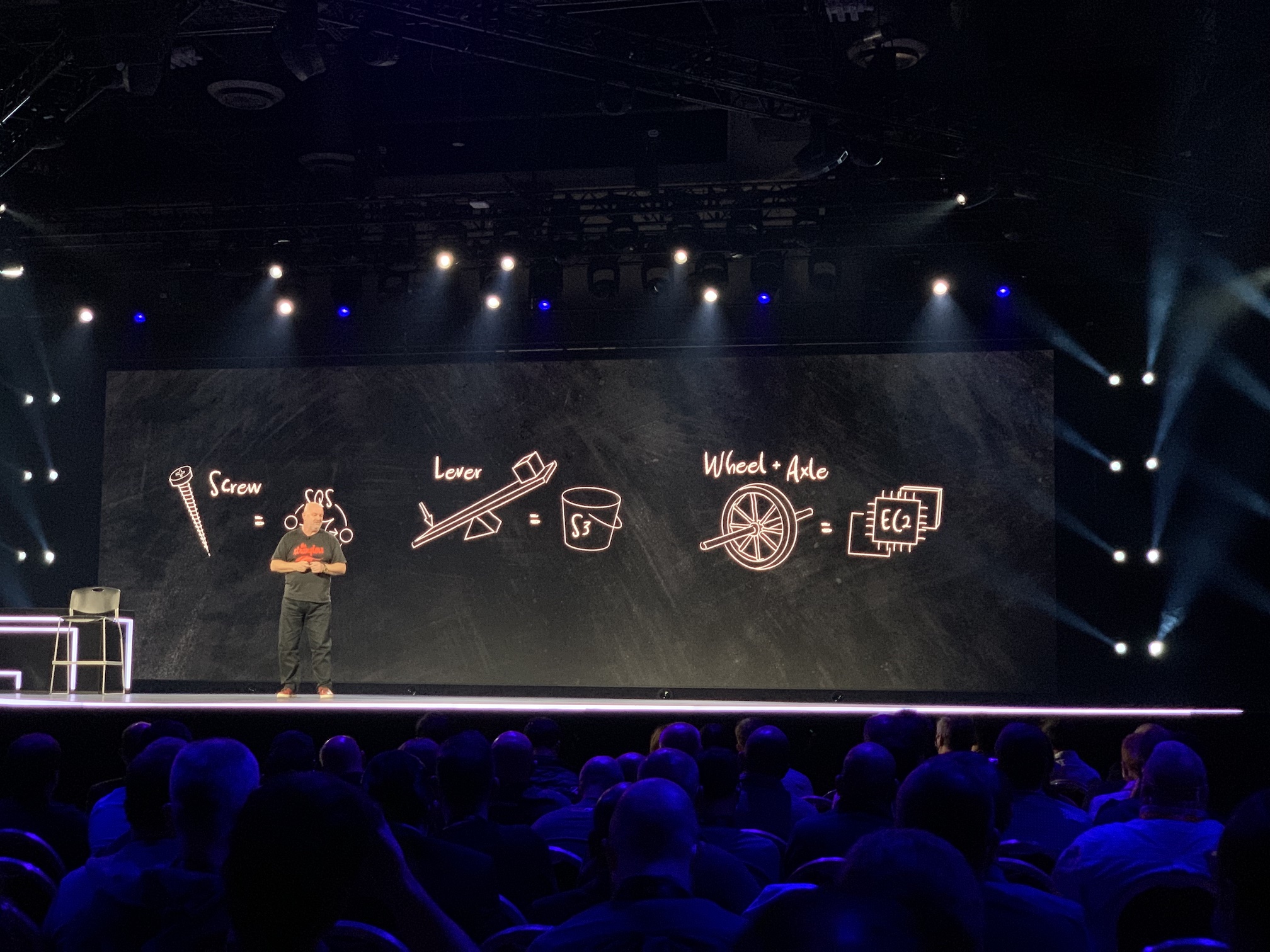On Thursday morning, I attended the keynote Dr Werner Vogels, CTO of Amazon. I have the feeling it’s one of the most awaited keynote, Werner Vogels is not just launching new services but also provide a better view on the architecture of the Cloud.
The keynote started with a movie about Werner Vogels doing a road trip to Las Vegas. I think I haven’t mentioned it yet but this year is the 10th anniversary of the re:Invent. So during the road trip we have seen some references to the past conferences. There have been new announces during the presentation but on this blog I’ll focus only on 2 topics.
AWS is available almost everywhere
The slide shows a region in the center with the Availability Zones. On the edge, we can see services that allows the access to AS while reducing the latency like local zones or the different points of presence (POP) available around the globe. Local zones that are currently available only in the United States but they will be extended internationally in 2022. The next step is to reach directly on-premise with AWS Outposts. You can run a piece of AWS inside your data centers with the availability now of smaller servers (1U and 2U in addition to the full 42U rack).
What can be next? Reaching the connected devices, the famous Internet of Things. AWS has also a number of services in that field. Then to go even further, even disconnected devices may reach the Cloud using product from the Snow family mentioned in a previous blog this week.
You probably now seeing what the last step. Even the sky is not a limit, AWS is also available from devices in space. AWS Ground Station is a fully managed services to control your satellite communications and enables you processing data generated in space in the Cloud.
Payam Banazadeh, CEO and founder of Capella Space came on stage to explain how satellites are now also one API call away.
AWS provides building bricks
Werner Vogels reminded that complex things are made of simple things. I like that slide where he compares some AWS services to simple tools. It means that those services are the small bricks on top of which you can build your complex applications.
Sometimes people may be afraid when the diagram starts to contain a high number of services. But it’s exactly the point, AWS calls its customers the builders. Take advantages of the more than 200 services to develop something new.
The conference is now almost to its end, stay tuned for the last blog post about it.



![Thumbnail [60x60]](https://www.dbi-services.com/blog/wp-content/uploads/2022/11/NIJ-min-scaled.jpg)
![Thumbnail [90x90]](https://www.dbi-services.com/blog/wp-content/uploads/2022/08/ENB_web-min-scaled.jpg)
![Thumbnail [90x90]](https://www.dbi-services.com/blog/wp-content/uploads/2022/08/ADE_WEB-min-scaled.jpg)
![Thumbnail [90x90]](https://www.dbi-services.com/blog/wp-content/uploads/2022/08/MOP_web-min-scaled.jpg)